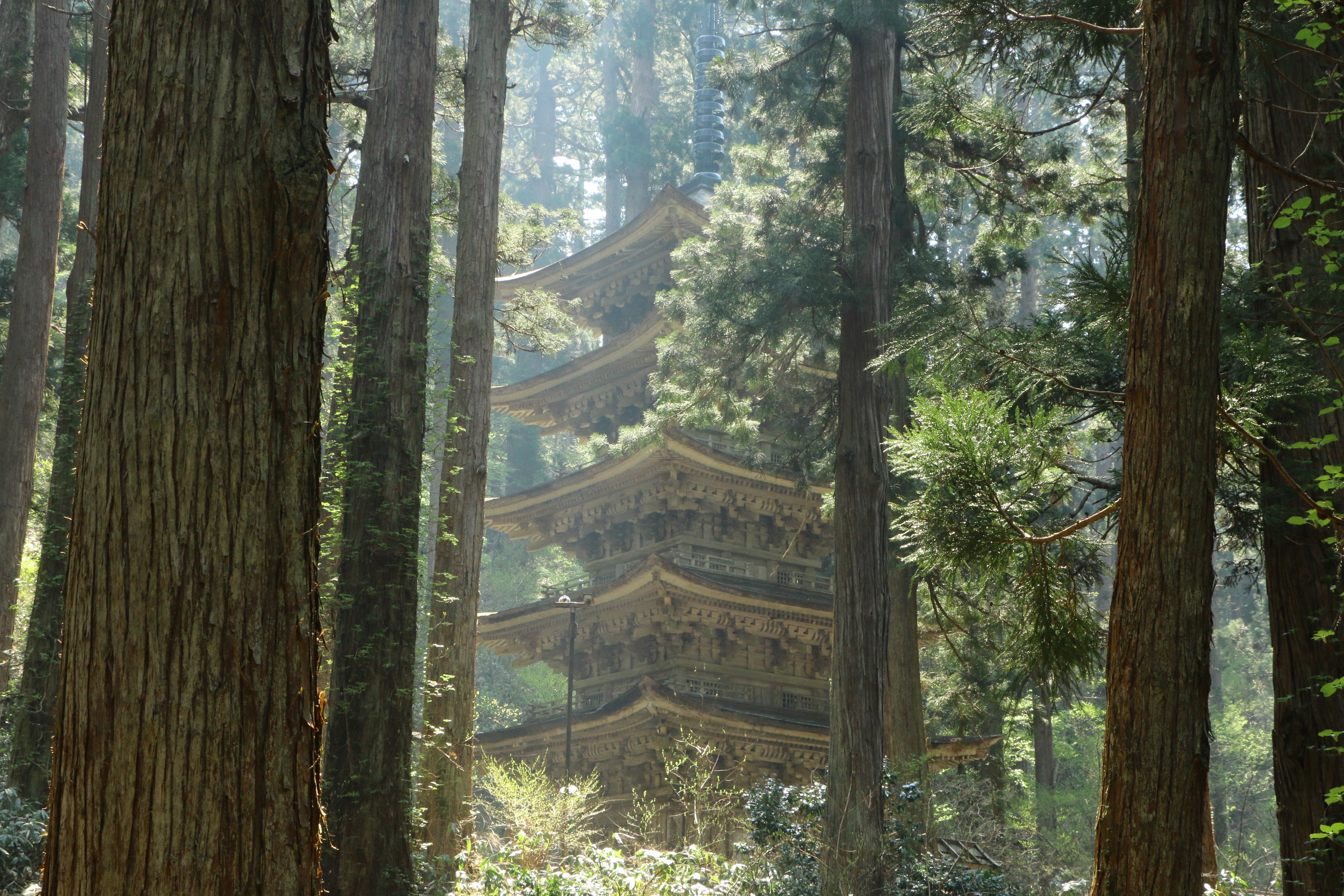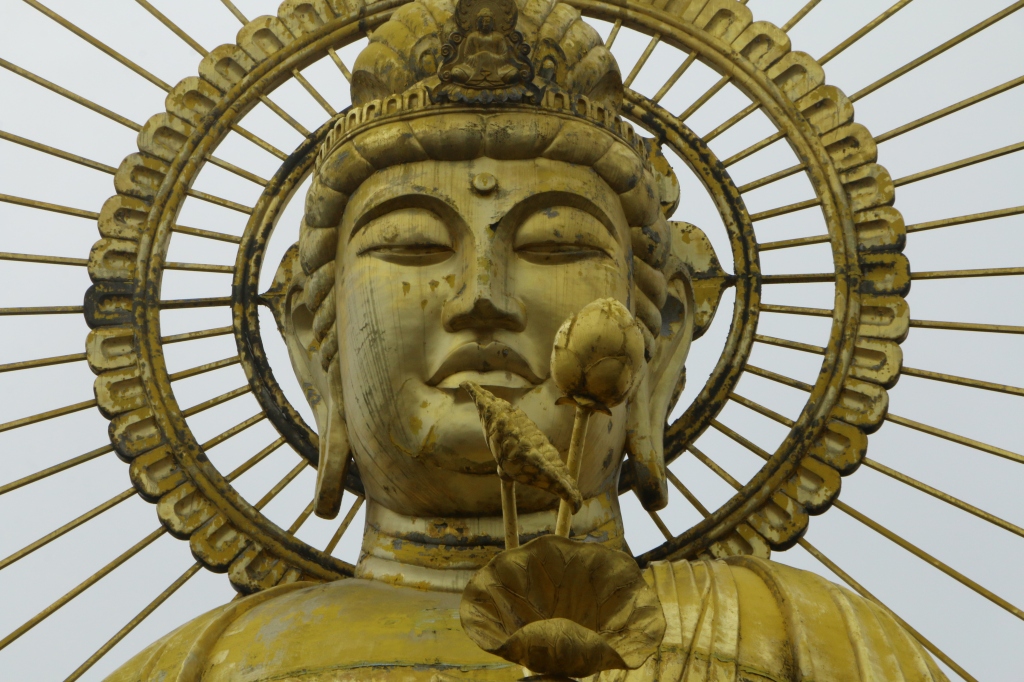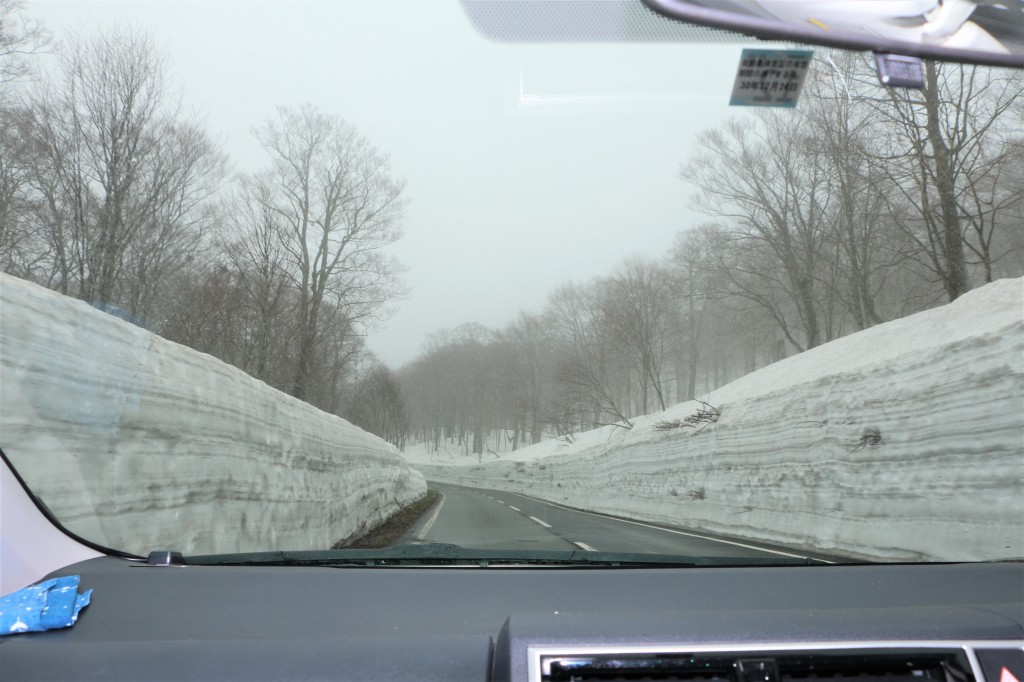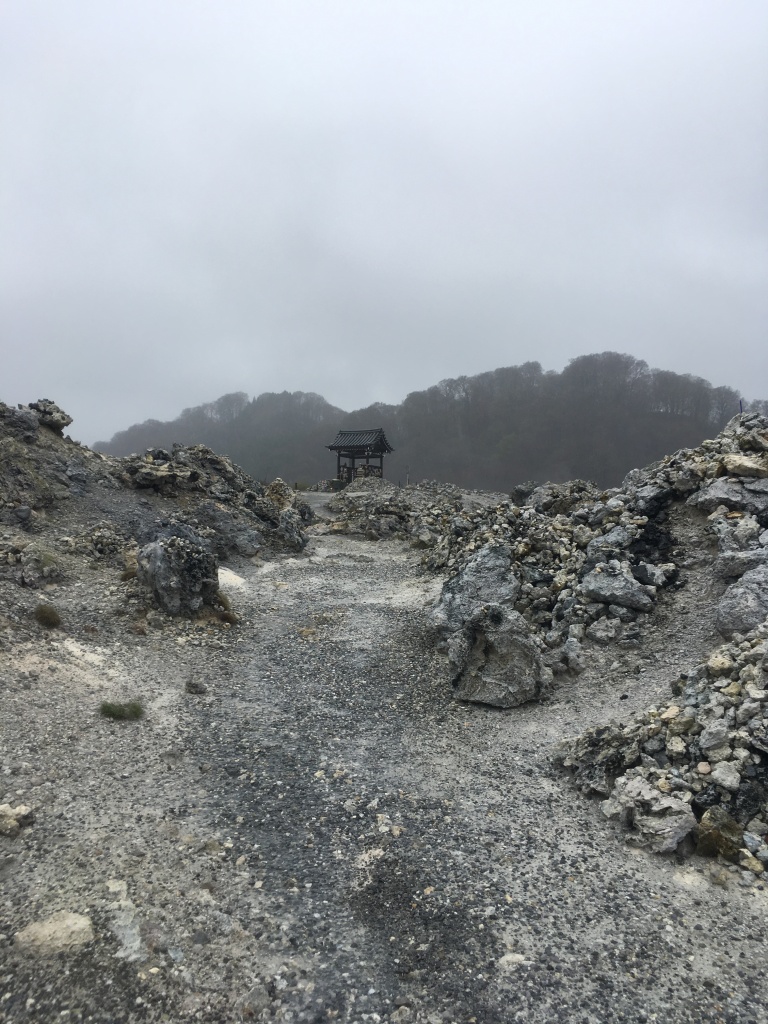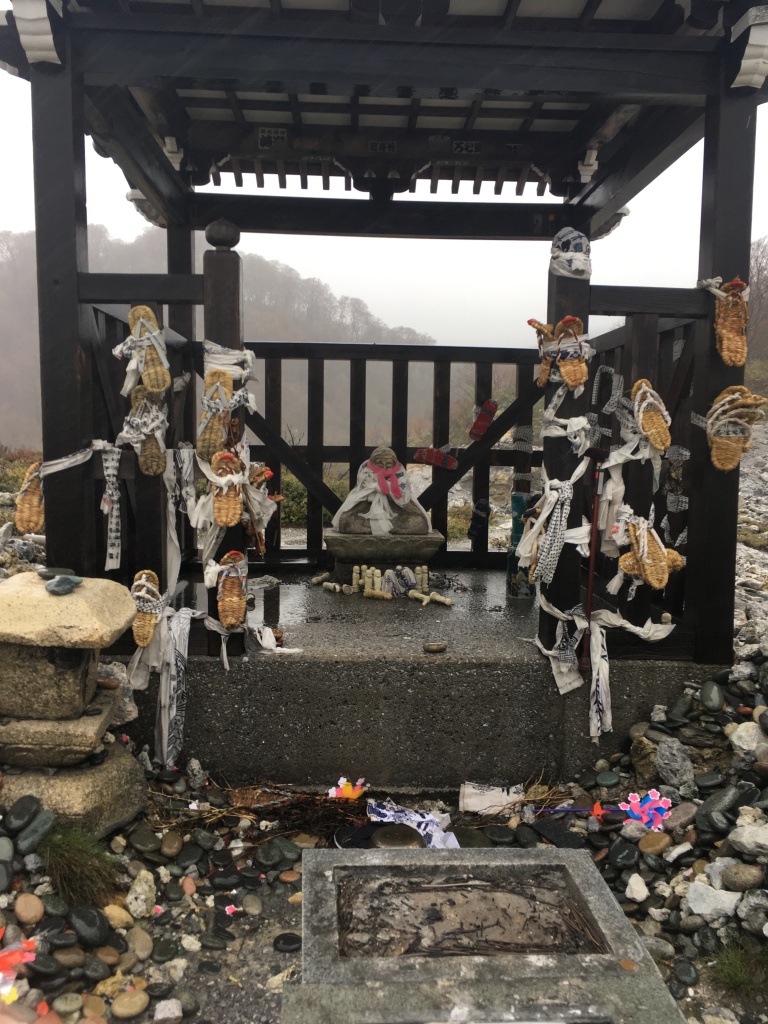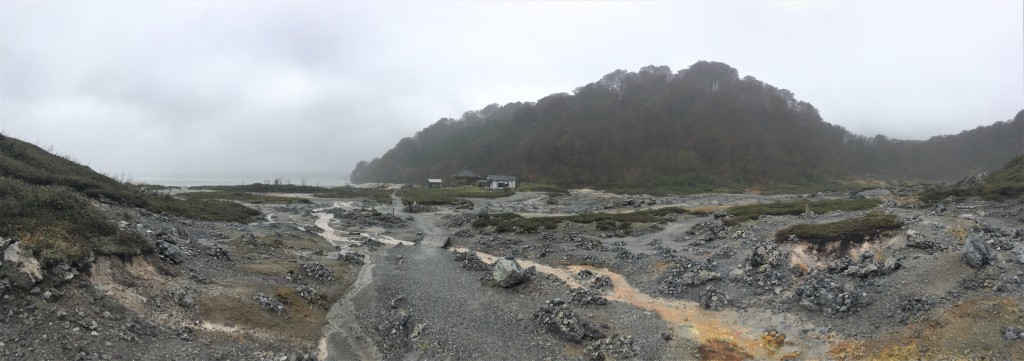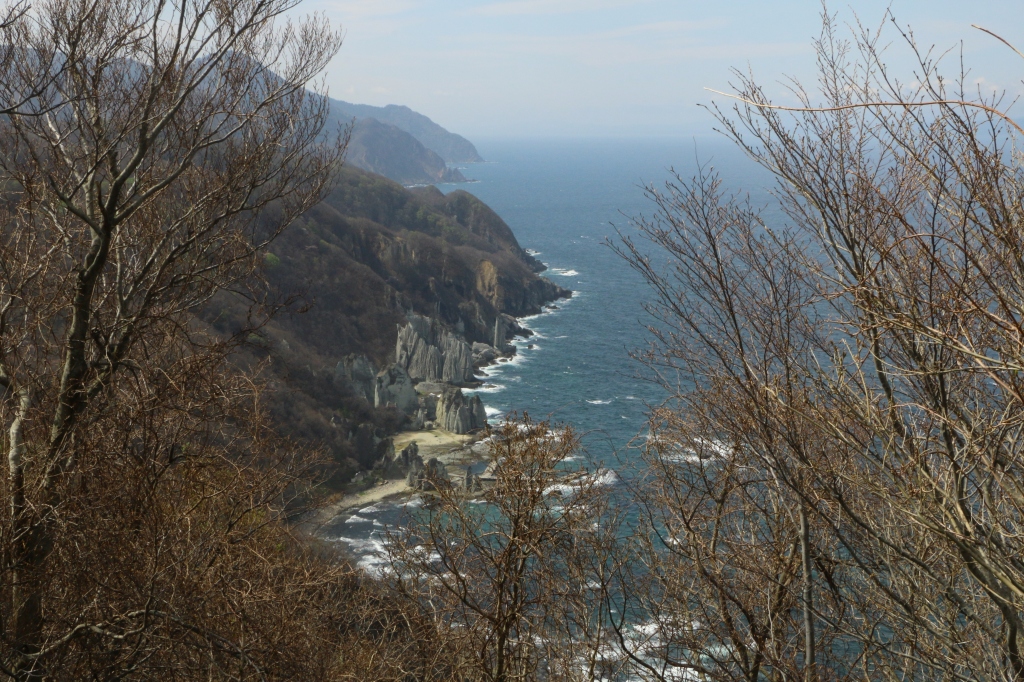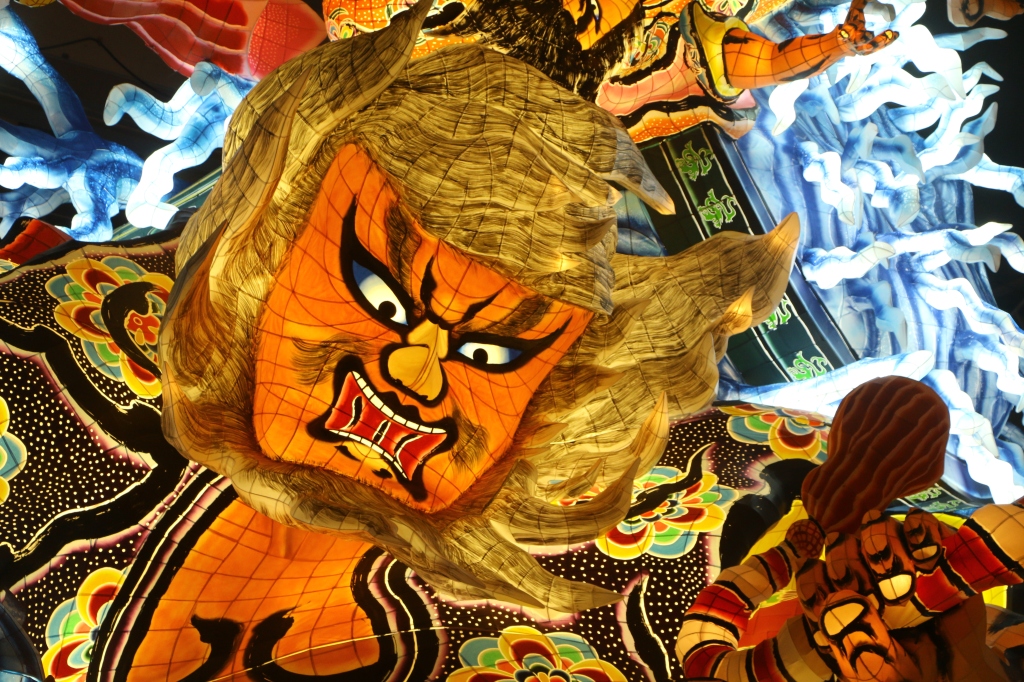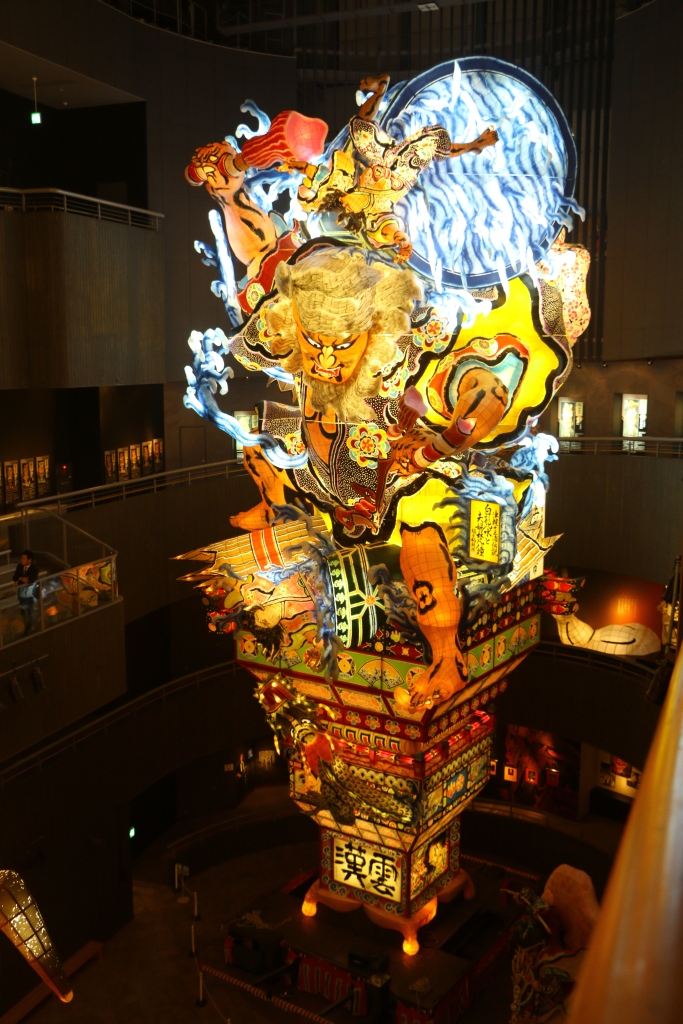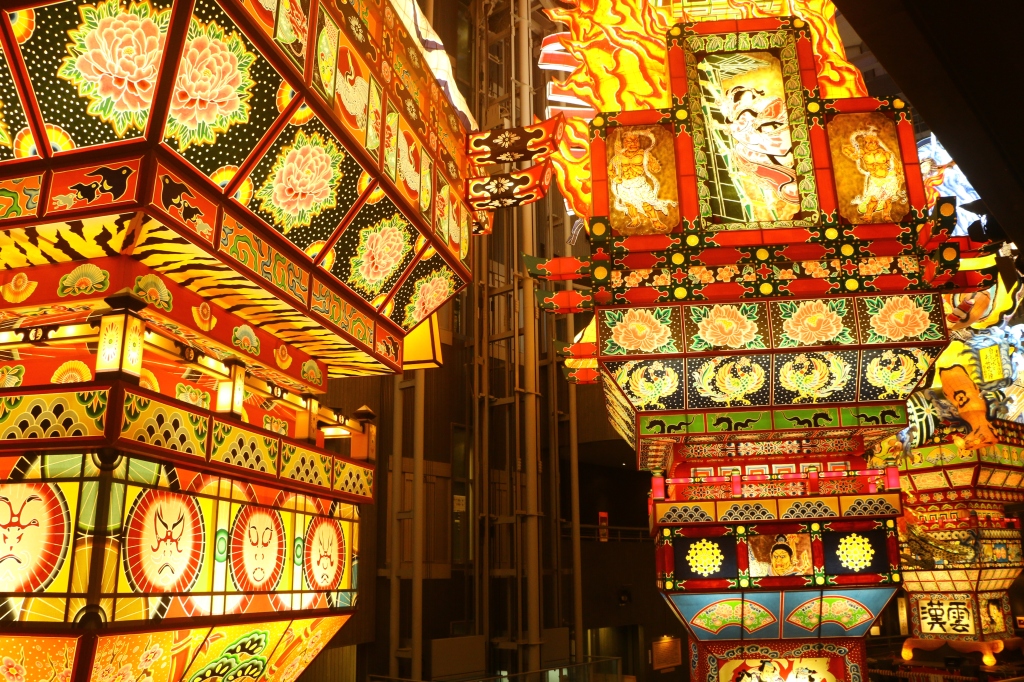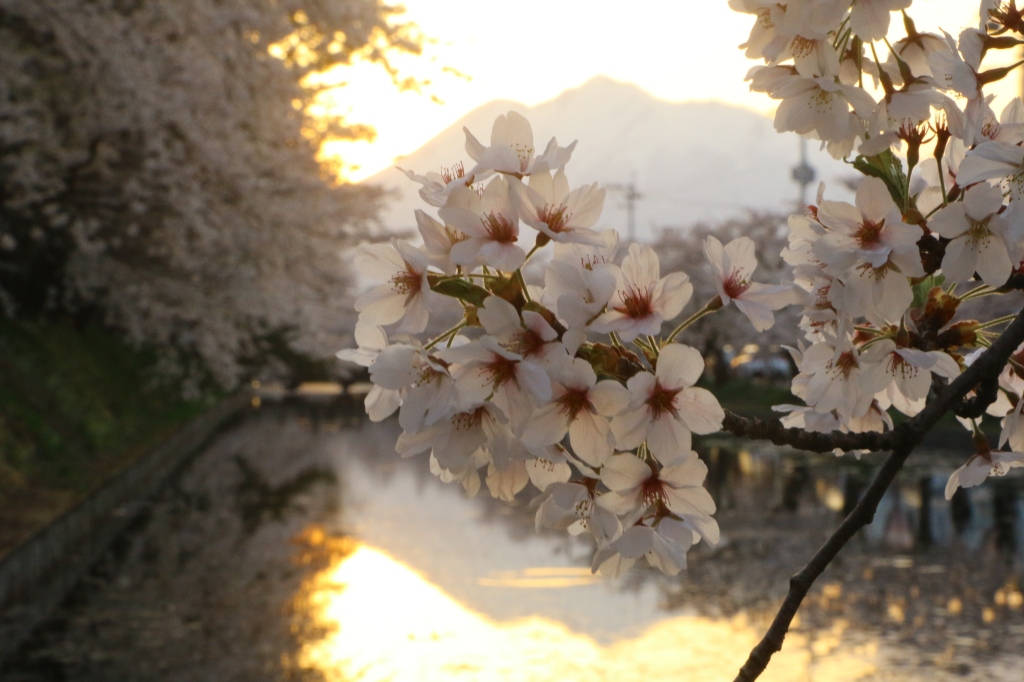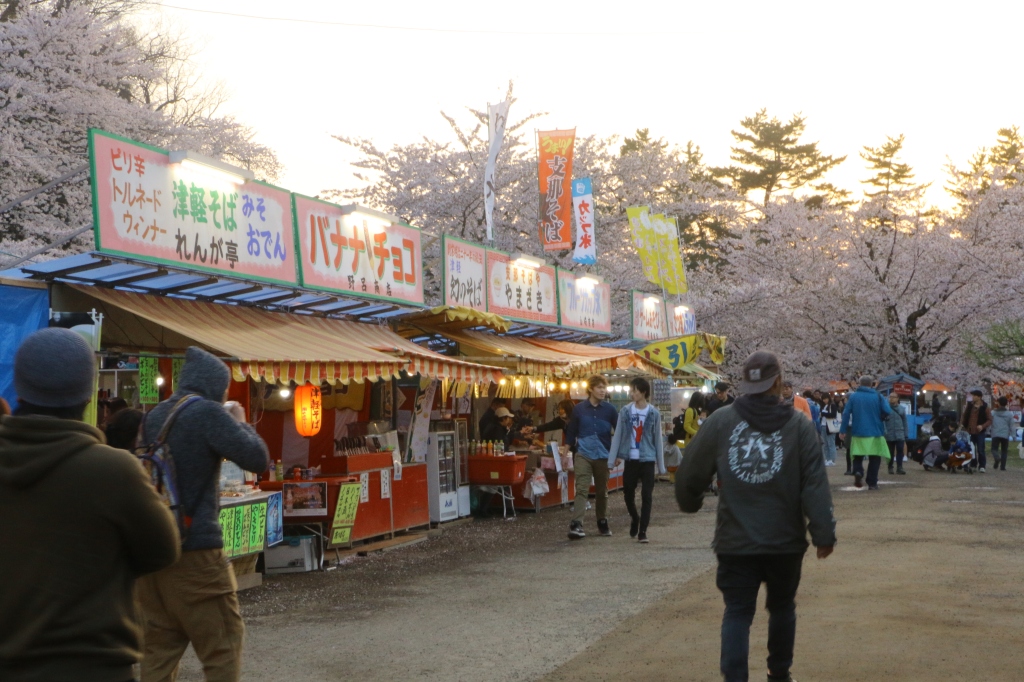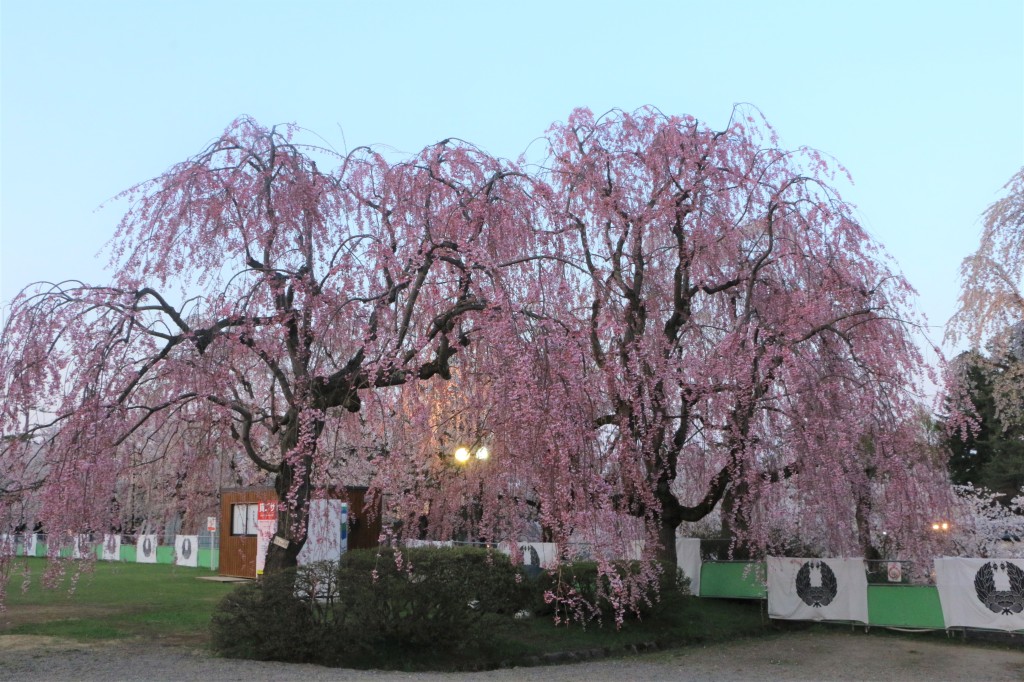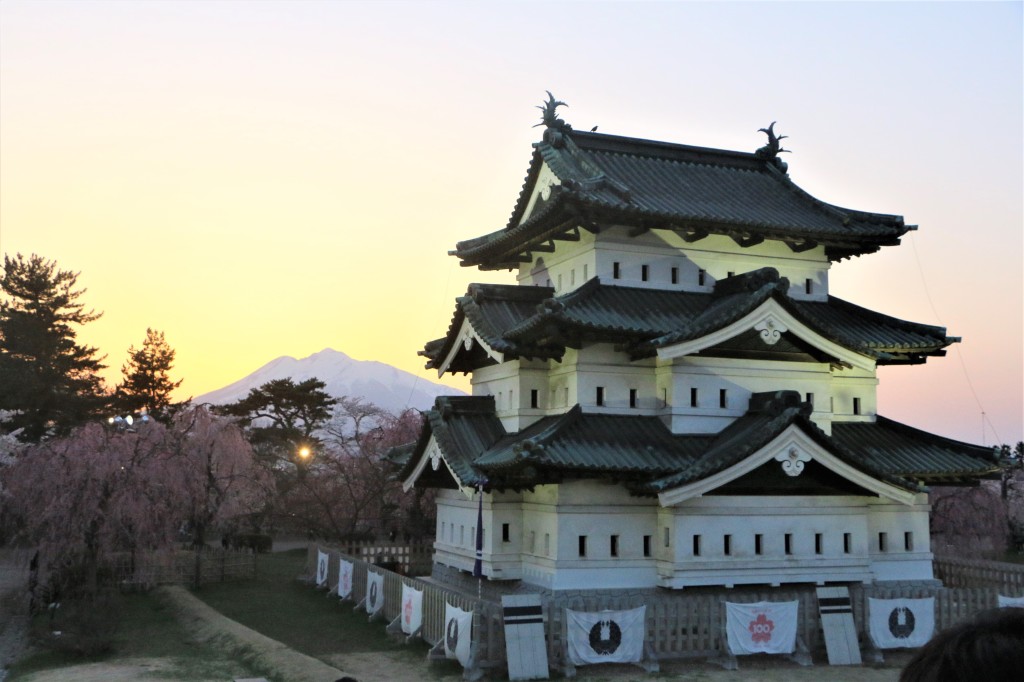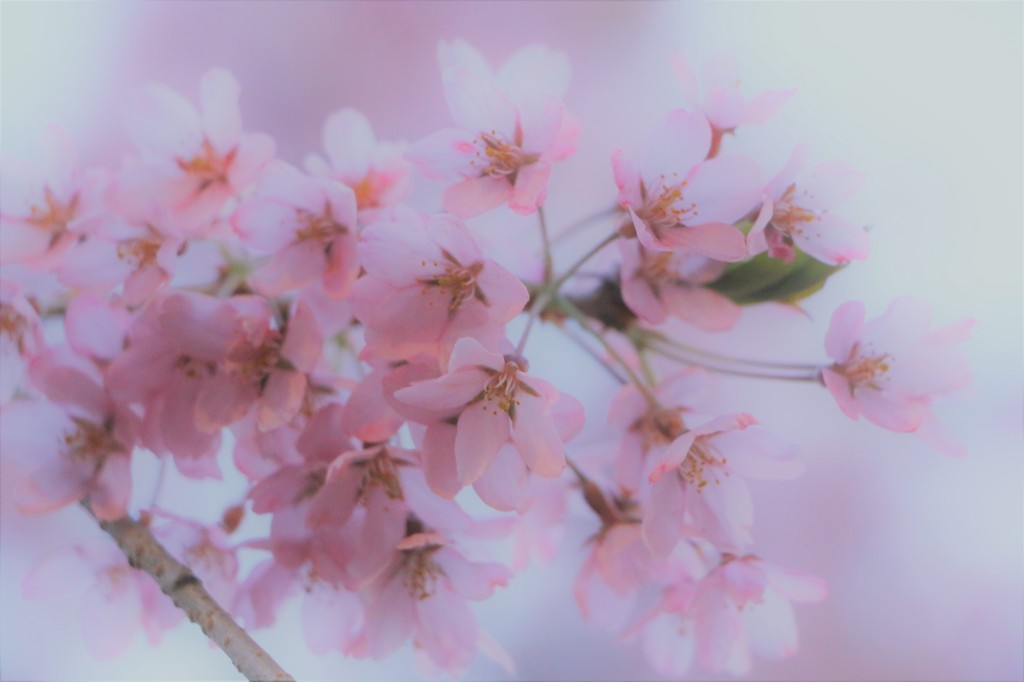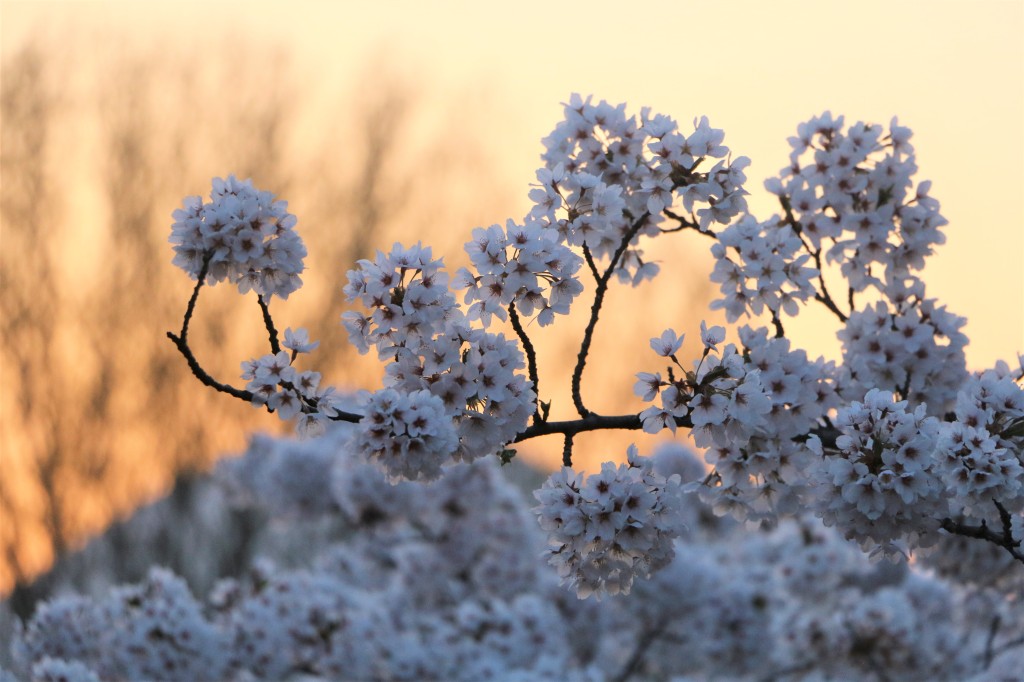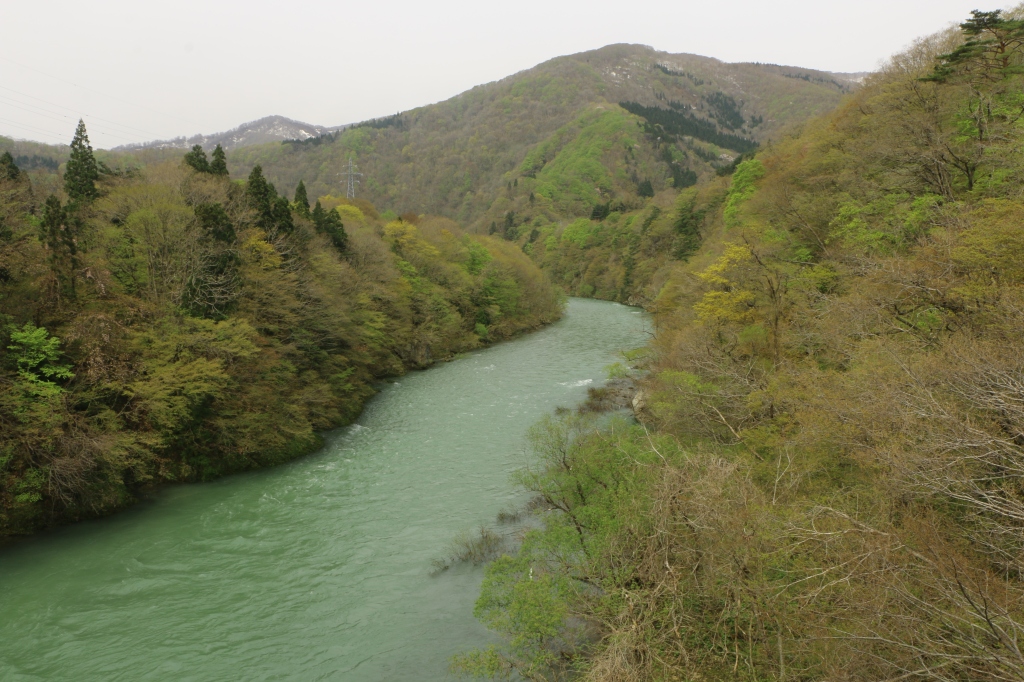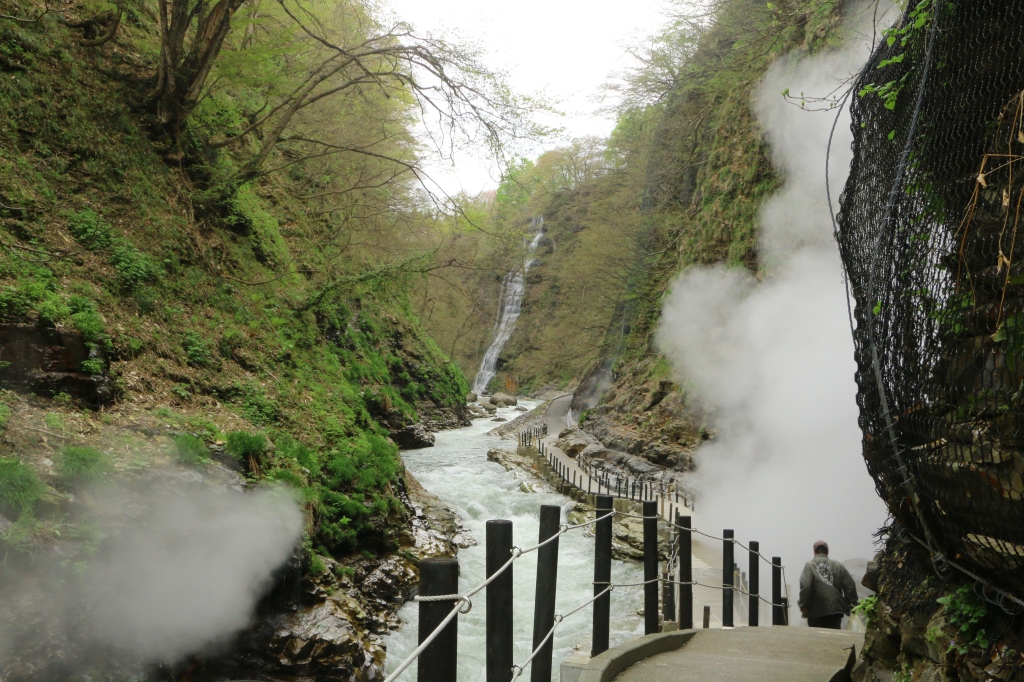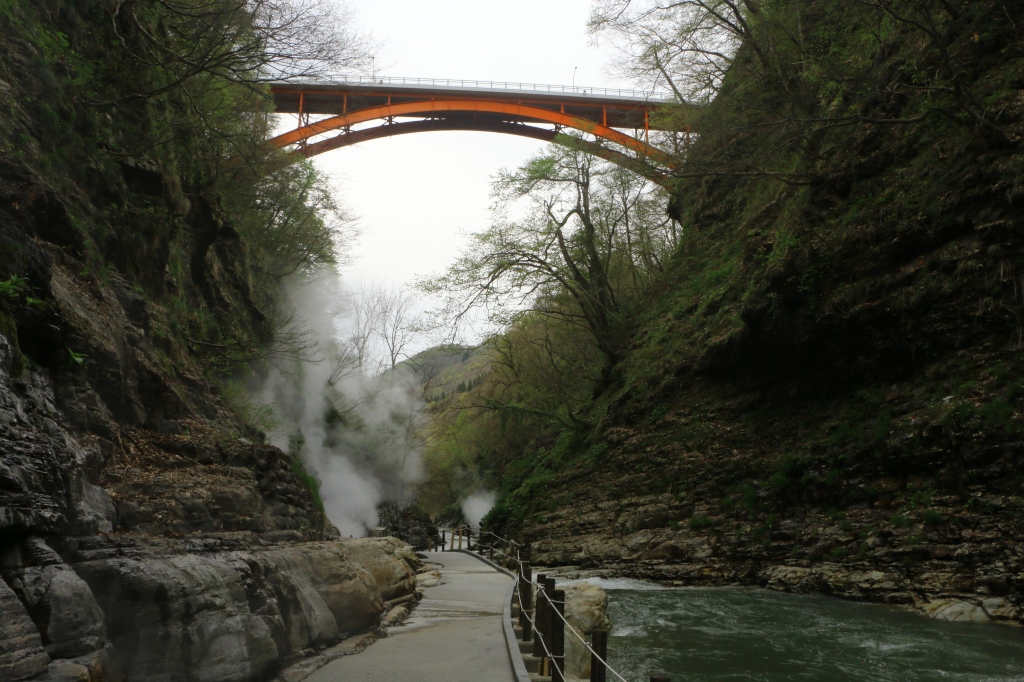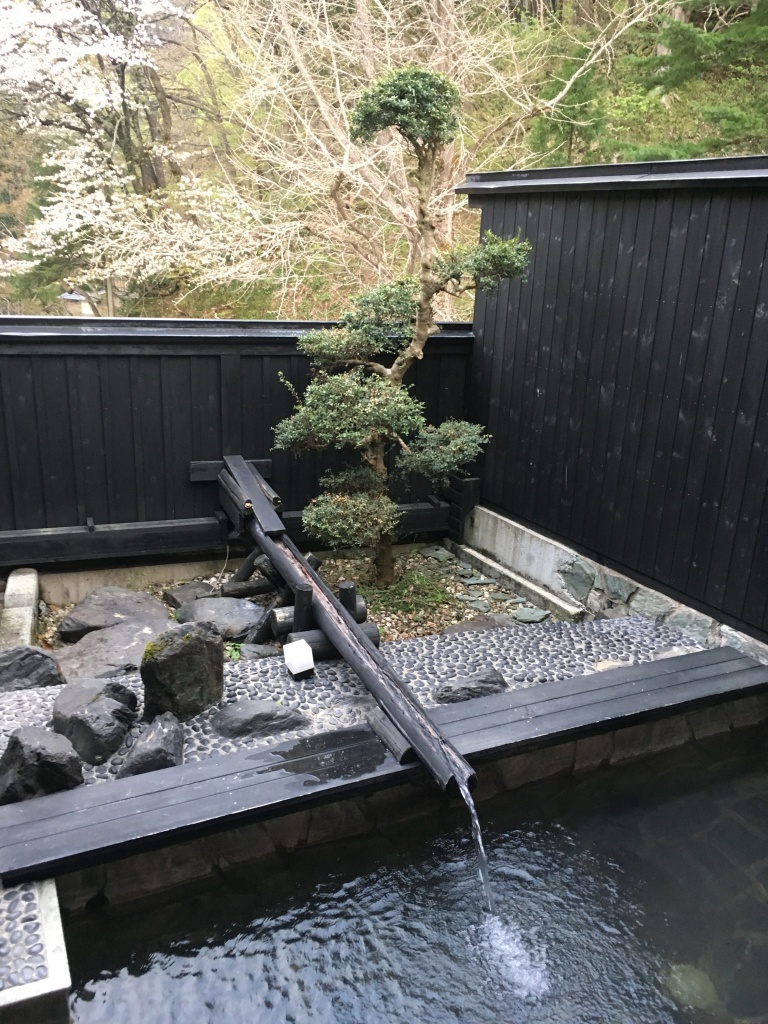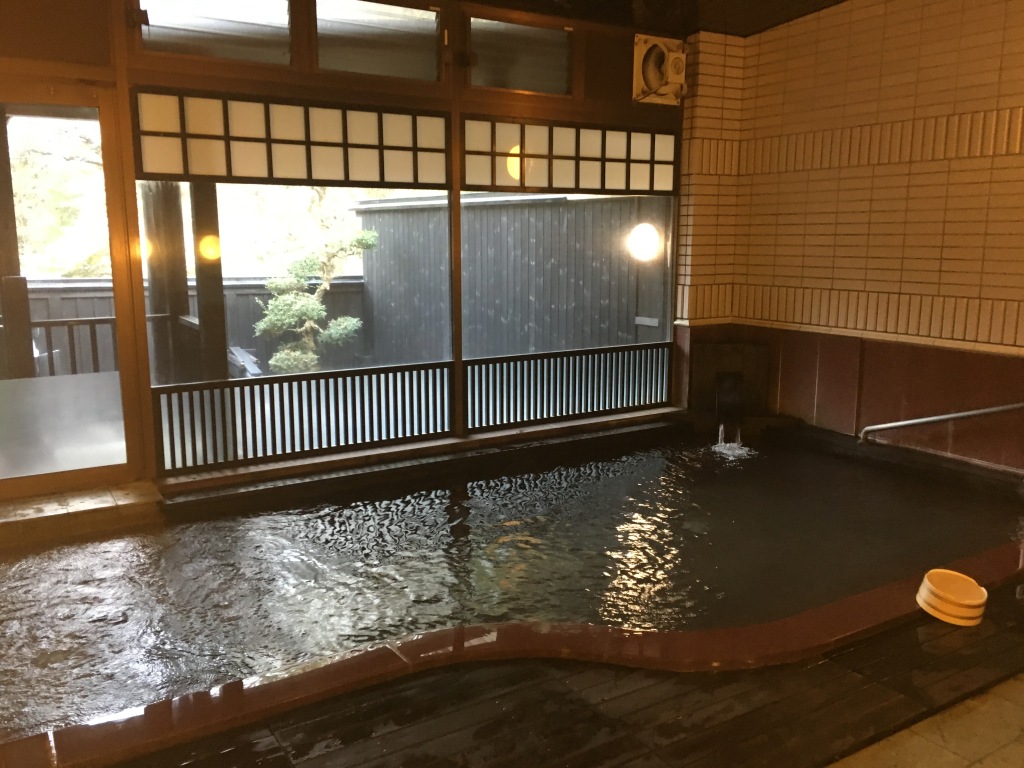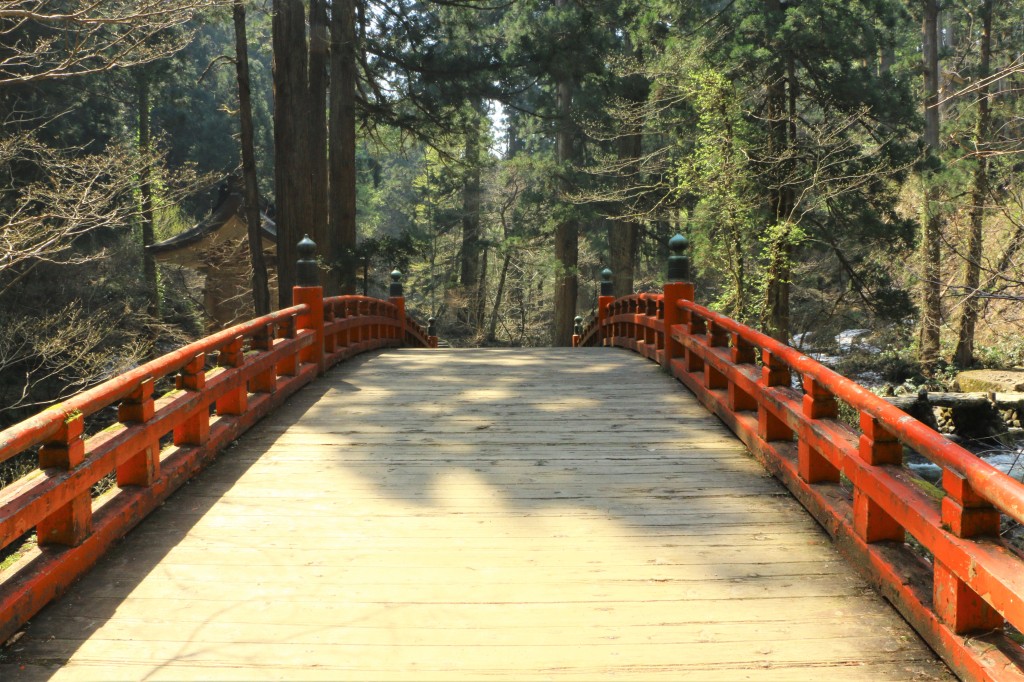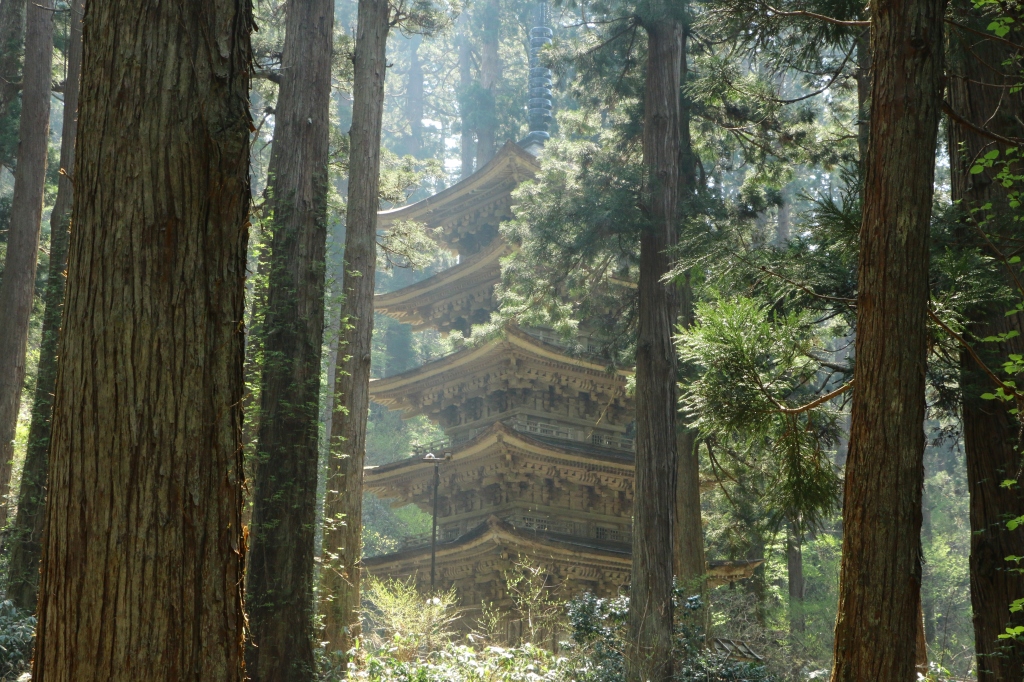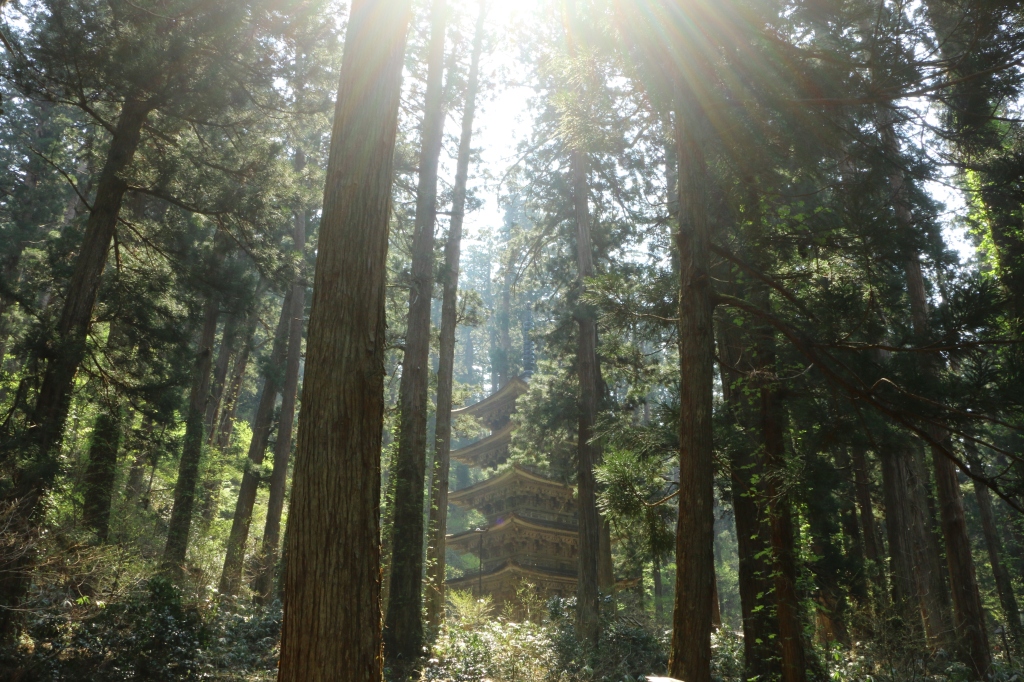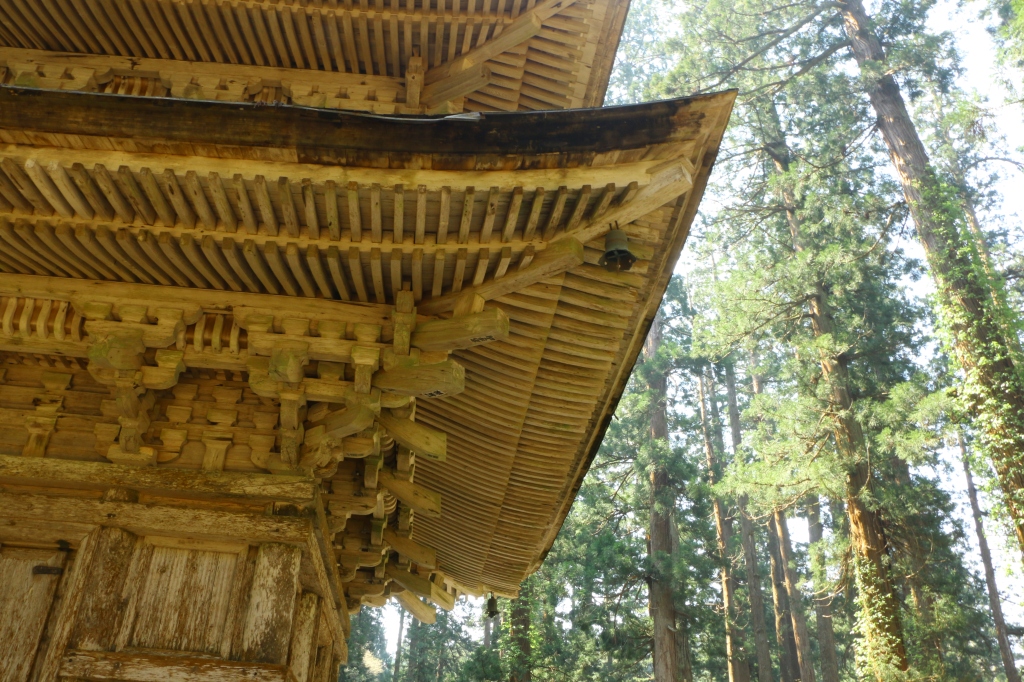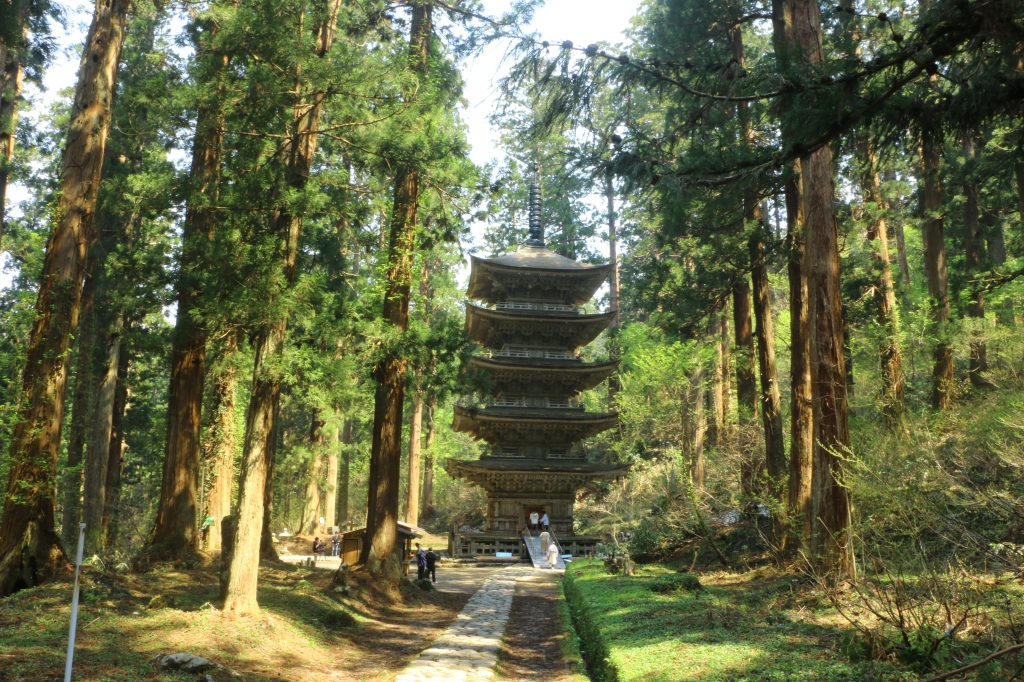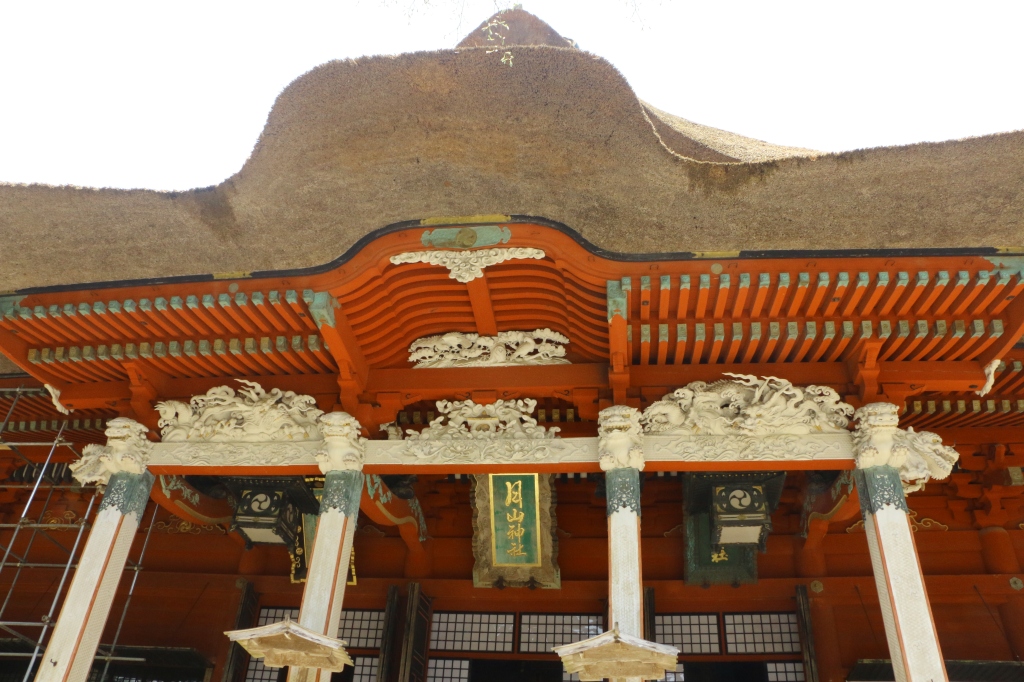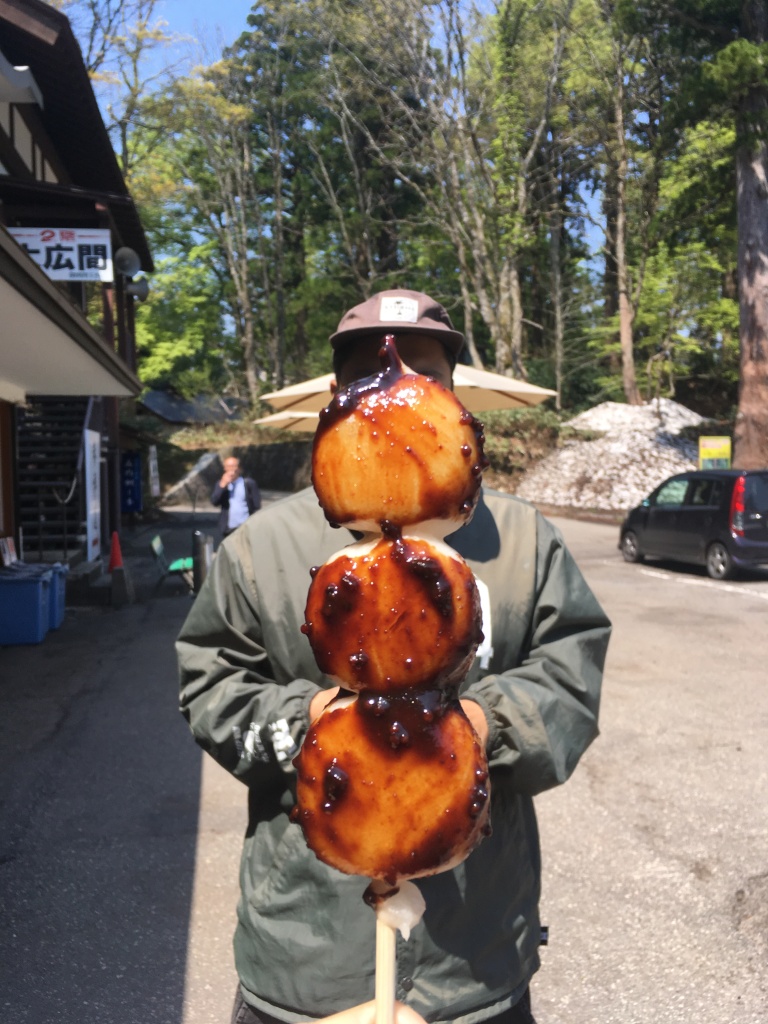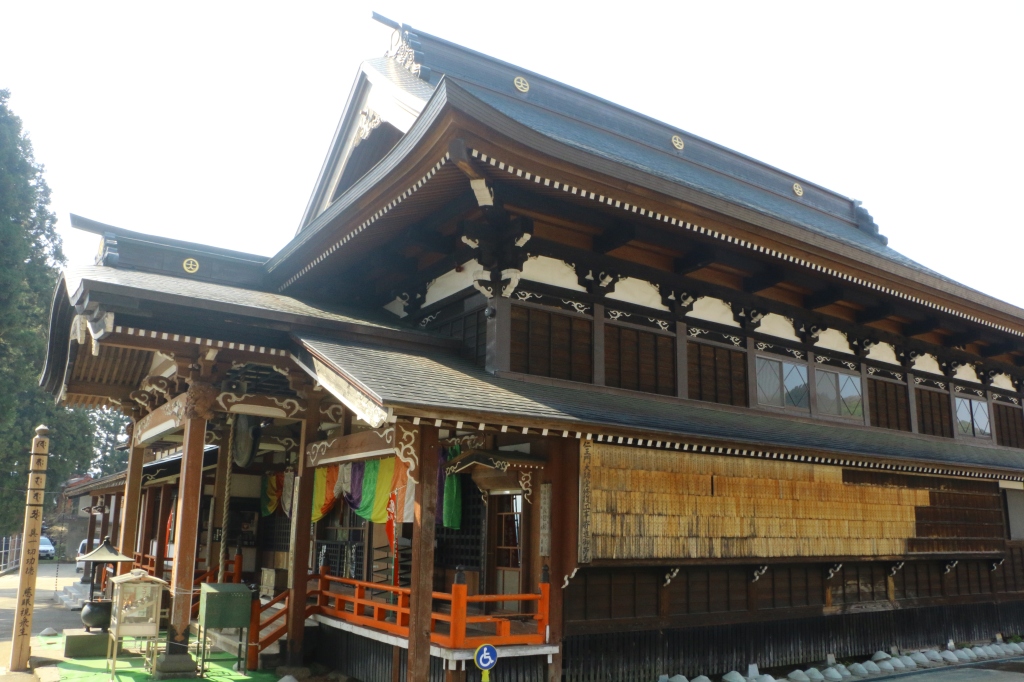Welcome! This is Part 2 of my epic road trip adventure around Tōhoku, taking in all of the highlights. If you haven’t read Part 1 yet, you can catch up here. We start this post on Day 5.
Day 5: Hachimantai to Nyuto Onsen (roughly 100km travelled)
We were desperate to get some snowboarding in, and now was our chance! After all, we didn’t lug around our boards, boots, and gear in the Ractis for nothing did we? We geared up and had a fun morning snowboarding at Appi Kōgen, but then the visibility worsened, and it started… raining? Not snowing? I guess that’s what you get for trying to snowboard in late April. We warmed up with an Indian curry and naan for lunch, and then hubby, determined to make the most of his lift pass, ventured back out into the whiteout while I watched and waited. And watched and waited. Hours passed. It started to get dark. There was no one left on the mountain. Every worst case scenario went through my mind and I was just about to alert the search and rescue crew when he finally reappeared, absolutely soaked. Let’s just say, don’t snowboard in a whiteout, kids.
After our snowboarding efforts and husband getting lost in the rain on the mountain, we decided to treat ourselves, so we booked a ryokan at Nyuto Onsen. Although it wasn’t far, we basically had to drive back all the way around the base of Mt. Iwate to get there, so it took longer than we thought it would. When we arrived at around 7pm, we were unexpectedly greeted by a rather rude and angry obaasan at the front desk. She scolded us for being late and said that our dinner got cold. She reluctantly served us, huffing and puffing, and after checking in, almost didn’t let us back out to get our bags out of the car because she wanted to lock up. We both felt like we were kids getting in trouble in the principal’s office. Japan is famous for its impeccable omotenashi hospitality, so it was surprising for both of us to experience this kind of service in Japan! (Note to self: confirming arrival time is important when meals are included.) After our day of snowboarding, and being roasted by the front desk lady, it was a nice treat to each have the mineral onsen to ourselves and stretch our legs out on the futon. Ahhh.
Day 6: Nyuto Onsen to Ōma Misaki (roughly 300km travelled)
On our way down from Nyuto Onsen, we saw a golden Daikannon peeking her head over the hills, so of course we had to go and investigate. It was another creepy but awesome B-kyuu spot. Our first leg of the day was driving from Tazawako to Towadako (try saying that fast 5 times). Even though it was raining and miserable, the national park around Towadako, a massive crater lake, was still beautiful and scenic. The road that followed the Oirase Stream was epic! There were countless waterfalls running into the stream, which was made even more dramatic by the rain and misty atmosphere. This was another one of those “if only we had more time..” moments. You can never pick the weather when you travel, so if you are on a tight schedule and run into bad weather, sometimes you end up having to miss what would otherwise be a big highlight of the trip. If we had more time, I would have loved to stay a night at Towadako, waited for the sun to come out and explored some of the many hiking trails on offer.
The next few hours were uneventful as we drove in the rain towards the most northern tip of Honshū. We made it to our next destination, Osorezan. Osorezan is one of the top three most sacred Buddhist sites in Japan and is said to be like the entrance to afterlife. I can’t describe it properly, but if you imagine a vast, barren, rocky, volcanically active wasteland, then you are kind of close. In true form, we arrived at the entrance with only 10 minutes until closing time (Why does this always happen to us?). We were upset at the thought of missing out, especially after driving all day and going out of our way to get there. Osorezan is literally in the middle of nowhere. I think the friendly old man at the counter took pity on us as it was raining and freezing and there was literally no one else around. He told us that he would let us in, but that he was closing up, so we were to let ourselves out the side gate when we were done. Yes! What a sweetheart. But also, is that even okay for tourists to be locked in a sacred site after hours? We started running to take it in as quickly as we could, mindful that it was about to be closed. Also, because did I mention it was raining? Then we started getting high on the energy of the place. It is said that souls cross the river here to get to the afterlife. We noticed that our feet were warming up, not only from running, but from the volcanic activity in the ground! Puddles of water were bubbling, and piles of rocks and streams were steaming! It was so grey and misty that we couldn’t tell where the horizon was. Lonely pinwheels were spinning from the power of the wind, and Buddhist statues seemed to be watching us. And here we were, locked in this sacred place which literally means “fear mountain” after hours with no one around! This memory will definitely stay with us for a long time.
We made it to Ōma Misaki (the most northern tip of mainland Honshū) and had a nice relaxing bath and sauna at the public bath centre there. Afterwards, while we were having dinner, a curious man invited himself to our table and started talking to us. He was way too interested in our relationship and how we met. He took some selfies with us, and then airdropped the photos he had taken of us, which included candid photos of just hubby and I eating, taken from across the room before he approached us. Eeep!
Day 7: Ōma Misaki to Hirosaki (roughly 180km travelled)
We woke up and checked out the wild coastline of Ōma Misaki. As we were in tuna country, we desperately wanted to get some fresh maguro but our timing was off yet again- nowhere was open this early in the morning, and we had to get moving as we had a ferry to catch. We cruised south along the coast road and took in the scenic spots like Hotokegaura before we caught our ferry across to the other side of Mutsuwan.
After briefly checking out the Seikan Tunnel Museum (the undersea rail tunnel that connects Honshū and Hokkaidō) and having the most amazing and fresh ika teishoku lunch, we made it to the Tachineputa Museum. What a surprising little gem this museum was! The Aomori Nebuta Matsuri is a huge summer festival where giant illuminated floats are paraded around at night with a convoy of taiko drummers and dancers. Throughout the year when they are not being used, these floats are housed in this purpose-built museum, where visitors can see them from every angle, top to bottom. It is one of the more unique and exciting museums that I’ve been to in Japan. Now I have to come back to Aomori in the summertime so that I can experience this festival for myself! Wasshoi! Wasshoi!
All hyped up, we headed to Hirosaki Castle for some hanami. We couldn’t believe our luck, because for a couple with pretty terrible timing, we somehow managed to get there just as the sun was setting, on the day when the cherry blossoms were in full bloom, and it just so happened to be the 100 year anniversary of the Hirosaki Castle Cherry Blossom Festival! What! This was one of those moments where we had to pinch ourselves because we were so clearly in the right place at the right time, right where we were meant to be. It was a magical night festival filled with illuminated cherry blossoms, delicious food stalls, amazake, and a lot of love. We capped off the night with another onsen dip. Ahh I love Japan.
Day 8: Hirosaki to Tozawa (roughly 325km travelled)
This was a big driving day. After a morning of driving, we decided to take a little walk around the sleepy mountain town we found ourselves in. We were admiring the white cherry blossoms and taking in the fresh mountain air when suddenly, a young black bear appeared literally metres from us on the side of the road! We both froze as the bear looked us square in the eyes, but then it got spooked and darted off down the embankment into the forest. What just happened!? Out of all our time living in and travelling around Japan, neither of us had ever encountered a bear in the wild, so our hearts were beating out of our chests with equal parts excitement and fear. All we kept thinking was, “we saw a baby bear, so that means a mama bear must be close by. Let’s get out of here!” We were on edge and on the lookout for the rest of the morning, but thankfully we never did get to meet mama bear.
Next up, we did some sightseeing at Oyasukyo. Oyasukyo is a deep and narrow gorge with a hot spring fed river. The river was steaming, the rocks were steaming, even the waterfalls were steaming! It is scenic and atmospheric and all we wanted to do was jump in. However, you can’t jump in, so we did the next best thing- went to the onsen down the road! It was a boujee modern ryokan that normally doesn’t take day guests but somehow, maybe because there was no one else around, we were lucky enough to be allowed in and use the facilities. We both had our own baths to ourselves and it was pure bliss! It was one of the nicer rotenburo (outdoor baths) I’ve been to, complete with a round yakisugi bathtub, tranquil water feature and a view of a cherry blossom tree in full bloom.
On the way to get some dinner, we saw a cute little castle perched on top of a hill nearby (Inaniwa-jō), so of course I had to check it out! One step closer to completing my dream of visiting every castle in Japan. It was getting dark, but it looked like we could enter the castle grounds. The hill was so steep and had a gondola lift which had closed for the day, so we had no choice but to trek up the billion steps to get there. There was a sign in the castle grounds that said “difficult to attack, easy to defend”, and I thought that sounded about right. Inaniwa Castle has a great view of the surrounding valleys, and I imagine it would be beautiful in the daytime. I was still on edge that mama bear might be watching us from the dark forest somewhere so with jelly legs, we trekked back down the billion steps to get some Inaniwa udon for dinner.
Day 9: Tozawa to Niigata (roughly 190km travelled)
A long time ago, before I first went to Japan, I was gifted a Japan travel guide. In this book, there is a picture of the most beautiful five storied pagoda nestled in a cedar forest. It is the pagoda at Haguro san, one of the Dewa Sanzan. This image has long been burned into my memory and so I was so excited to finally be ticking it off my bucket list. The three sacred mountains of Dewa are Haguro san, Gas san and Yudono san, and are usually visited in that order as they represent birth, death and rebirth. We walked along the worn cobblestone path in the forest, over the curved vermillion bridge and then we saw it, the pagoda peeking out from between the trees. The morning light created a glow around the pagoda, and in the distance, chanting from the Buddhist monks was echoing through the forest. Time stood still, and I felt like I was in a dream. This place was seriously special. This is another one one of those places where you need to pack your hiking boots, block out the entire day and just meander through the forests, making your way from temple to temple.
After eating some insanely good miso & soy sauce glazed dango, we headed to an even more insane B-kyuu spot, Dainichibo. Dainichibo houses a well preserved sokushinbutsu, or Buddhist mummy. There are actually several sokushinbutsu around the Yamagata and Niigata areas. What’s unique about sokushinbutsu is that they were Buddhist monks who began mummifying themselves when they were alive, as a form of enlightenment. Yes, you read that right. They followed a long, grueling process that involved a restricted diet including tree bark and sap, followed by increased fasting to dehydrate and preserve their bodies in death. We had a little tour of Dainichibo, with the temple head explaining the ins and outs of the sokushinbutsu. It was fascinating and only just a little bit creepy.
We had a flight to catch in a few hours from Niigata Airport. We were devastated that our trip was coming to an end. Our cheap futon set proved to be most comfortable throughout our journey, so we decided to pay an arm and a leg for excess baggage to fly those babies back home with us to Australia. But before we boarded our flight we had to make one more quick stop- at the Niigata Senbei Ōkoku (Kingdom) to stock up on those delicious rice crackers.
It’s funny because out of all of Japan, Tōhoku had the smallest impression on us before going our trip, but it ended up leaving the biggest impression on us, and being one of our favourite holidays ever. It was so jam-packed, it doesn’t feel like we were gone for only 9 days. We experienced so much. We are still finding out about amazing places in Tōhoku that we missed, and adding them to our bucket list for next time. For example, we’ve recently become interested in ancient Jōmon culture, and discovered there are a number of important historical sites in Aomori. I’d also love to visit in Summer to see the rice paddy art in Inakadate, and experience the epic festivals like Neputa and Sendai Tanabata Matsuri. Do you live in Tōhoku or have you visited Tōhoku before? What are your travel highlights for the region?
If you are thinking about going to Tōhoku, I highly recommend hiring a car, as many places are so remote and aren’t directly accessible by train. Hiring a car gives you not only time freedom, but freedom to check out those unexpected gems that pop up along your journey. And if you are planning on sleeping in your car like we did, maybe hire something bigger than a Ractis 😉 Our road trip was not for the faint hearted- we covered a lot of ground in a short amount of time to complete as much as possible, because we didn’t know if we’d ever have the opportunity to go back (now we dream up our next Tōhoku itinerary at least once a month). So I definitely recommend taking your time if you can. While late April did give us the joy of seeing the cherry blossoms in full bloom in front of snow capped mountains, the snow wasn’t good enough to enjoy full days of snowboarding. As with anywhere in Japan, you really feel the four distinct seasons, so I’m sure any time you visit Tōhoku will give you a unique experience to treasure. The best part of all is that most of Tōhoku still feels so untouched, so wild. On so many occasions we were the only people around, and had tourist destinations, nature spots and onsens all to ourselves. So what are you waiting for? Japan is now open to tourists again, so go ahead and book that trip to the lesser known, lesser travelled and less spoiled northern region of Tōhoku. You won’t regret it!

